Part 1: The Journey toward the DMZ’s Joint Security Area
When planning our trip to South Korea, one of our travel buddies told us that the Demilitarized Zone (DMZ) was on his must-see list for Seoul. I did a quick google search (as I’m ashamed to say I didn’t even know it existed) and read that it was a sanctuary for wildlife because it was a death-zone for humans. Truly a no-go zone. On the South Korean side, there is a minefield that has over a million active mines. We can assume that it is similar on the North Korean side. But, as I did more research, mostly for our friend, I decided that it had quickly claimed a spot on my must-see list as well.
Quick history: The Korean war never officially ended. There was an armistice agreement that was essentially a cease fire, but never a treaty. So, for the last 70-ish years, the Korean war has basically just been on pause, while the two sides literally stare at each other over the border, sometimes broadcast their respective propaganda and construct things to show off to or one-up the other side. The DMZ is composed of 2km on either side of the line of last conflict, running roughly along the 38th parallel. It is thus a swath of land that traverses the 250km of the Korean peninsula, and also a swath of land that effectively renders South Korea an island, as it is impossible to travel in or out of South Korea without a boat or plane. Technically, no arms are allowed within this zone, but this isn’t EXACTLY followed (hence the minefield, heavy artillery and scads of troops). It is the most heavily guarded and fortified border in the world, but there is no wall; simply a series of white posts every 2 meters that mark the line between the two Koreas. The political and cultural displays that play out at the DMZ are perhaps the oddest the world has to offer—a strange concoction of real-life threat, posturing, distorted projections and theater that serve to distort reality and historical record. Still confused? This video might help explain it a bit more.
The political and cultural displays that play out at the DMZ are perhaps the oddest the world has to offer—a strange concoction of real-life threat, posturing, distorted projections and theater that serve to distort reality and historical record.
When you reach the DMZ, civilians are no longer allowed to continue north, thus you must travel with an official tour company. The security is high and there is a strict dress code in place for those visiting from the South so that the North doesn’t use photos of sloppily dressed democratic citizens to denounce democracy and further create a negative image of the outside world for it’s people. No athletic clothing, nothing stretchy (like leggings), nothing sheer, nothing with logos, no ripped jeans, no shorts or skirts above the knee, no carrying anything but your camera into the Joint Security Area. You sign a form (twice) saying that if you die it isn’t their fault. Still, over 10,000 tourists visit the DMZ each year, and, if given the chance, I suggest you do as well.
We left from the USO Office at Camp Kim in Seoul and boarded the bus to head North, with the Han River to our west. Since arriving in Seoul, there was a dense smog over the city rendering the skies much like those of a cold winter’s day. There was an immense disconnect between the appearance and the reality; perhaps foreshadowing this venture toward North Korea. We commented on the smog, but our tour guide seemed convinced that there was no pollution and it was simply the weather. Doubtful, yet perhaps the pollution levels are quite low in comparison to other Asian mega-cities. Interestingly, as we parted from the bustling civilisation of Seoul and approached no-man’s-land, the skies cleared.
As did the roads. The journey toward the DMZ from Seoul is about an hour’s drive, and the further north we traveled, the fewer cars accompanied us on the roads. You could literally tell you were traveling where few had a reason (or clearance) to go. As we got further north, the bank of the Han was lined with barbed wire and dotted with military observation posts. My understanding was these were measures to keep the North from invading, but not to keep defectors from passing. South Korea is welcoming to defectors and even has measures in the DMZ to aid anyone attempting to defect.
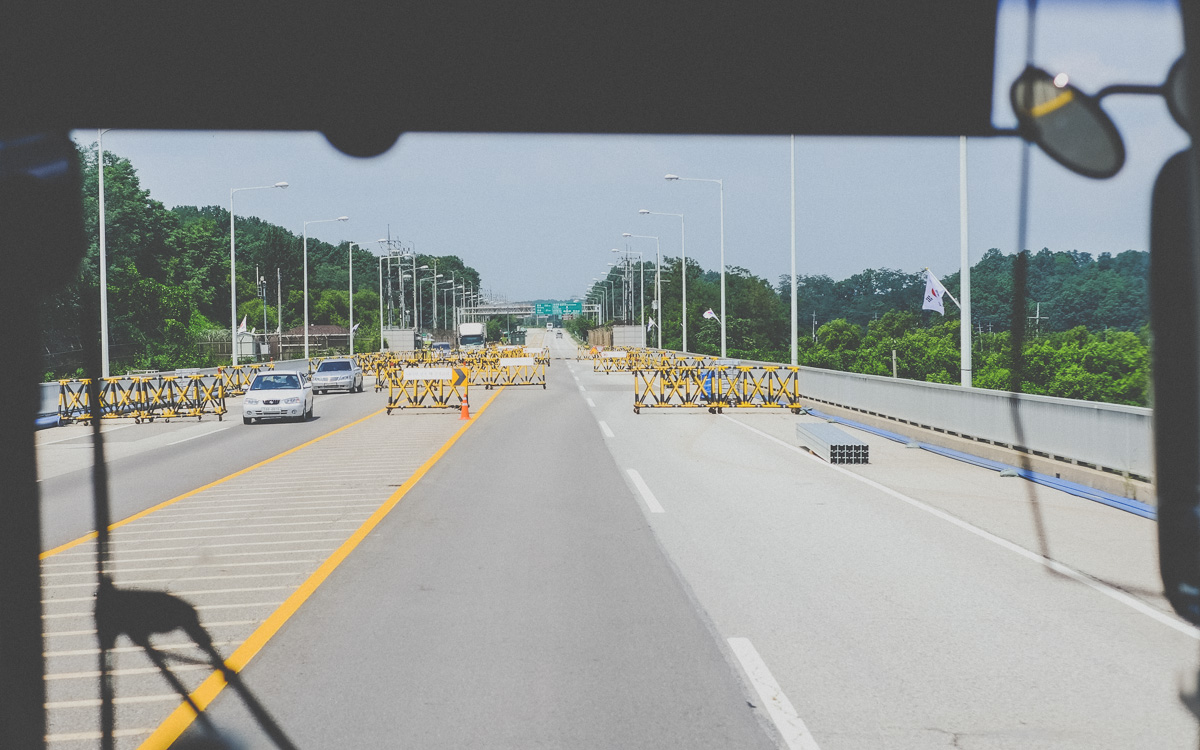
No one is going through here very fast. Just after the first security check-point, we had to weave through a series of diagonally placed barriers.
As we reached the no-go line for civilians, our credentials were checked and we continued on toward our first stop: The third infiltration tunnel. We were told that the North has at least 20 (at one point I heard hundreds, some of which going 40+ miles to the center of Seoul, but these claims are unconfirmed), but only 4 have been found to date. When discovered, from the help of a defected North Korean soldier, the North denied that they had built an infiltration tunnel and rather claimed they were coal mining… apparently in a straight line south among exclusively granite. We were able to walk through the first kilometer until we reached the first or a series of steel barriers put in place to keep the North out. The climb out was nothing short of intense. We had not realized how steep the ramp down into the tunnel was when descending, but it quickly became apparent as we began climbing out. I would caution anyone who has physical difficulties to think twice about visiting the tunnel as the ascent is no joke and you often are crouched over while walking through the tunnel as it is only 2m high (or less at some points). The fact that this tunnel was used to invade South Korea gets a tad lost among the crowds of tourists passing through and the gift shop at the entrance, so I took time to note the frequent scars on the wall from the dynamite blasts and to imagine the process it took to drill this tunnel 70 years ago.
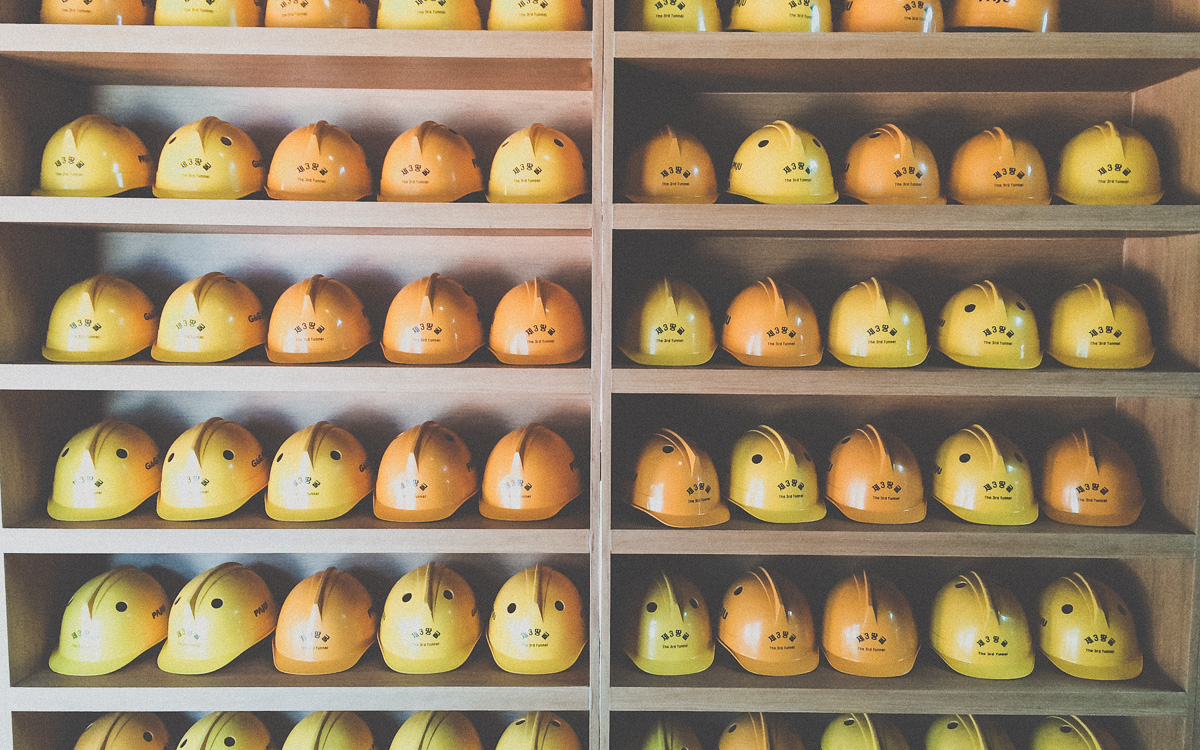
About to enter the 3rd Infiltration Tunnel at the DMZ. This was one of 20-100+ tunnels built by the North during the Korean Way to invade the South. It is 1 of only 4 that have been found to date. Frequently less than 2 meters high (~6 ft) and both myself and Jérôme had our helmets knocked from our heads along the way.
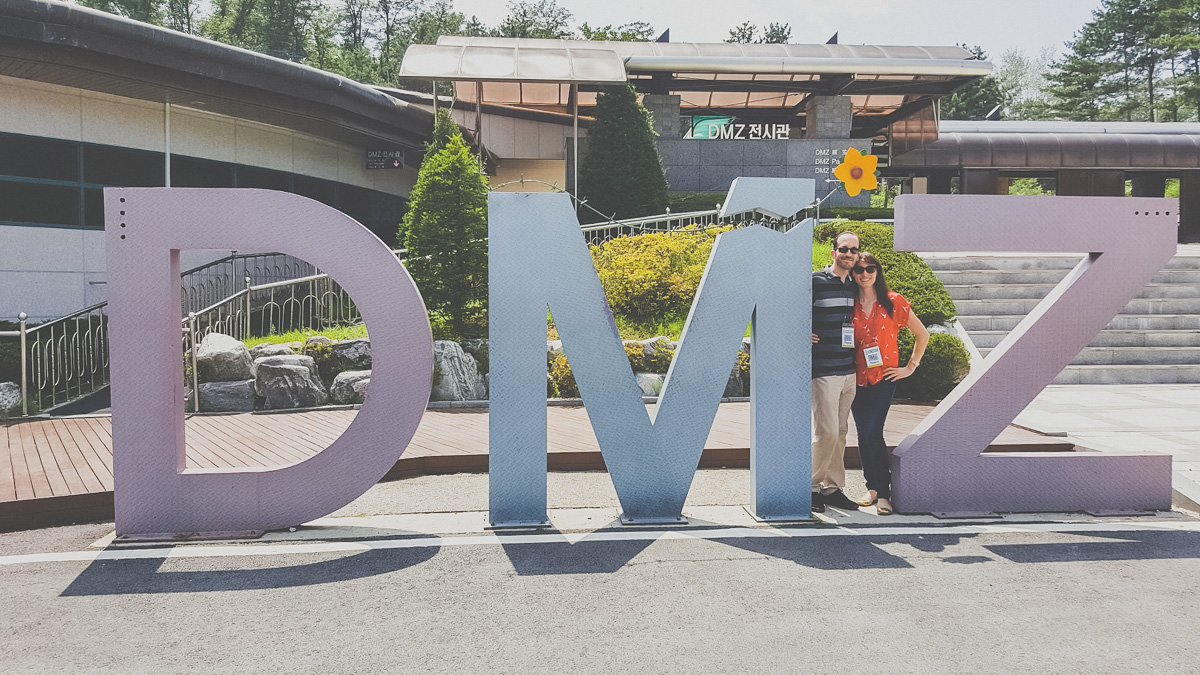
A little bizarre how friendly they try to make the DMZ seem to tourists. Apparently these two kids “fell for it.”
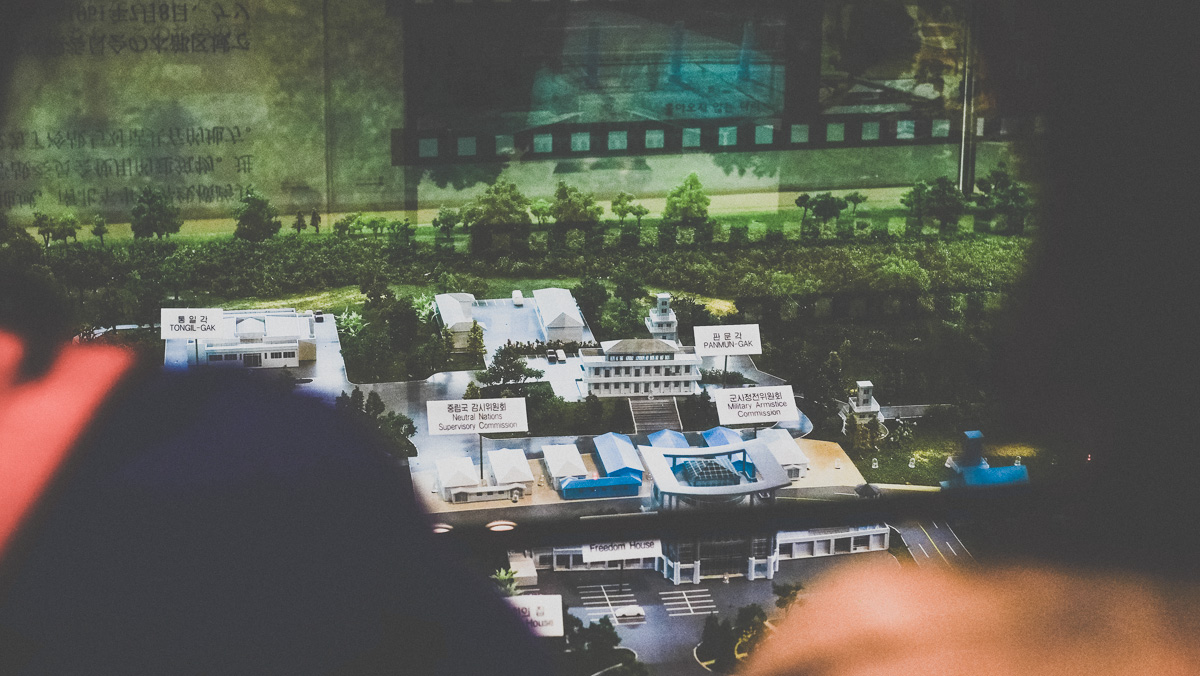
There in the museum, our guide gave us a overview of all that we would be seeing for the day and the layout of the DMZ and Joint Security Area (JSA).
After the tunnel, we headed to the Dora Observatory, which was my favorite spot outside of the JSA. Using a word like “favorite” seems wildly inappropriate, but it was fascinating to peer off into North Korea, and the panorama was actually quite breathtaking. You could see the two flags—the first erected by South Korea at 100m high, then the one bested by North Korea at 160m high (and the world’s tallest). You could see propaganda village—a fake village constructed by North Korea to try to create the impression of wealth and modernity. Most of the windows and doors are painted on the buildings and no one lives there. You can see the Kaesong Industrial Complex that is actually a joint operation between the two Koreas. The South provides supplies (and you can see the constant envoy of trucks coming and going) and the North supplies the workers.
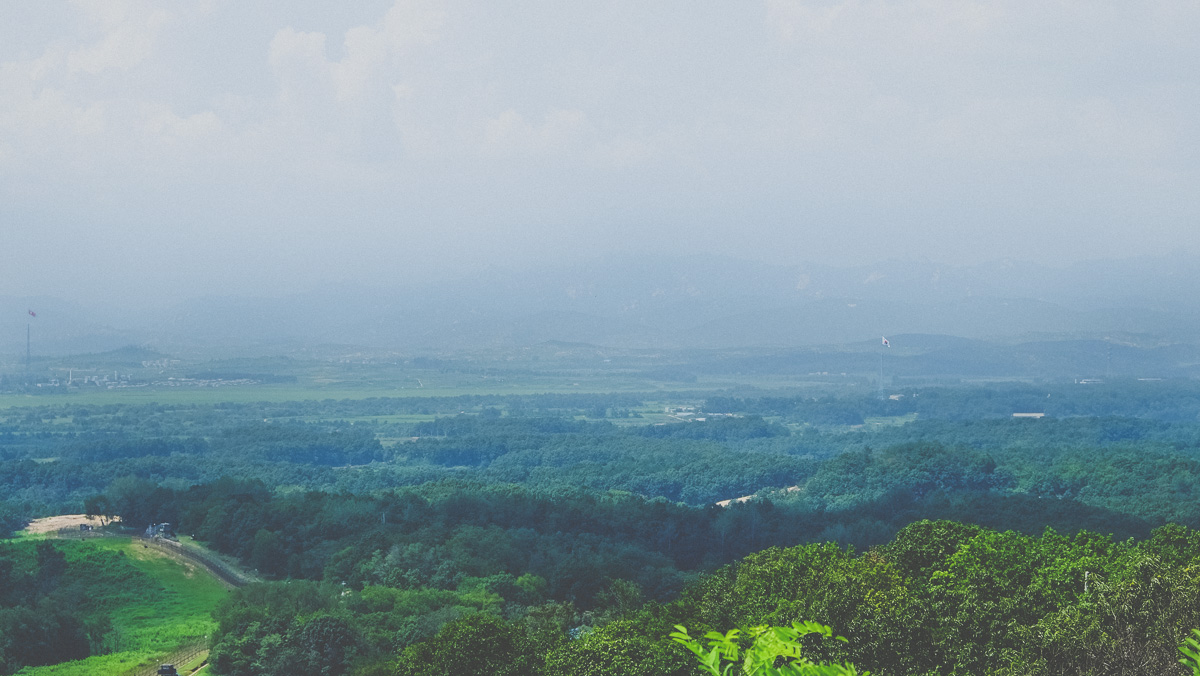
Here we could see both Koreas and their Flagpole Wars. The white flag to the right is that of South Korea, sitting at 100m high. That of North Korea, to the far left, flys at 160m high and was erected as a response to the southern flag and is currently the world’s highest. South Korea has yet to respond.
Following the observatory and lunch, we headed to Dorasan Station, which is the last train station before the North. It was operational at one point, but since a N. Korean attack in 2008, the services stopped running. Now, there is this pristine station just waiting for reunification. There are signs for the trains headed to Pyongyang (capital of North Korea) and maps which show this railway connecting to that of the Siberian, where Koreans could thereby pass to Europe. But for now, the only ticket you can buy leads you only as far as the open-air platform where you find signs to Pyongyang and also those that read:
“Dorasan: Not the last stop from the South but the first toward the North.”
The platform was rather uneventful. A disgruntled (French!) tourist complained that the ticket to the platform wasn’t worth the 500 won that he had just paid (equivalent to abut 40 cents). Not really sure what he was expecting to see on a non-operational train platform?
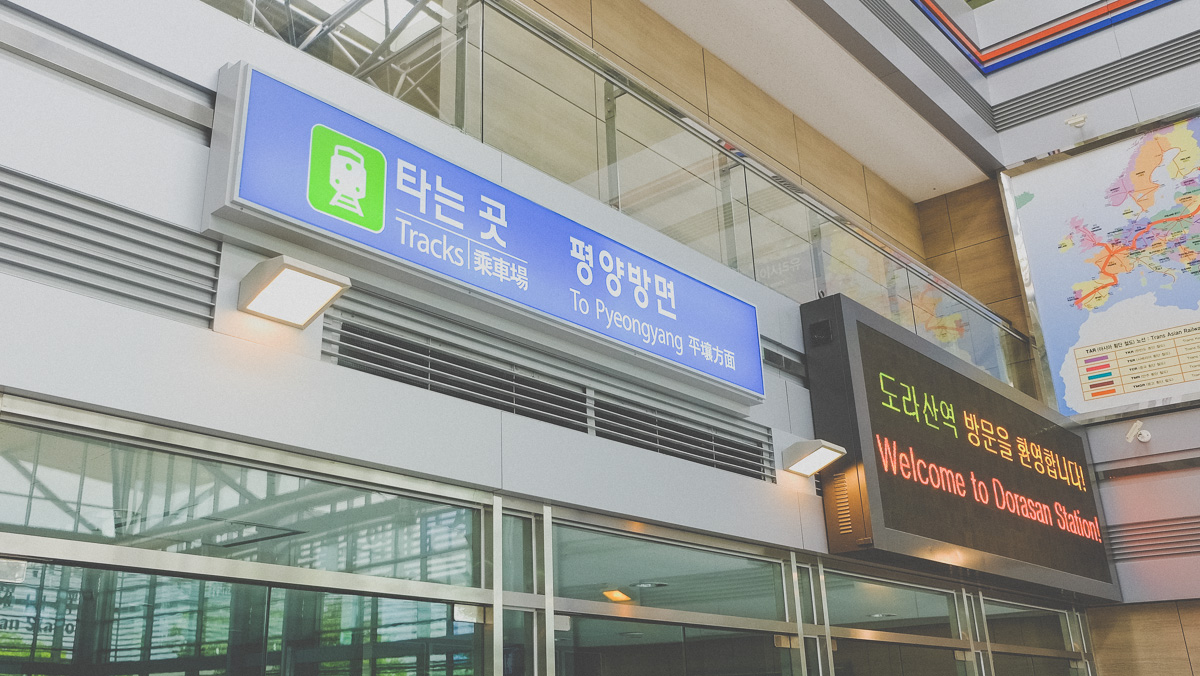
The tracks are ready to take you to Pyeongyang, North Korea. We bought a “ticket” to Pyeongyang and thus were able to access the platform.
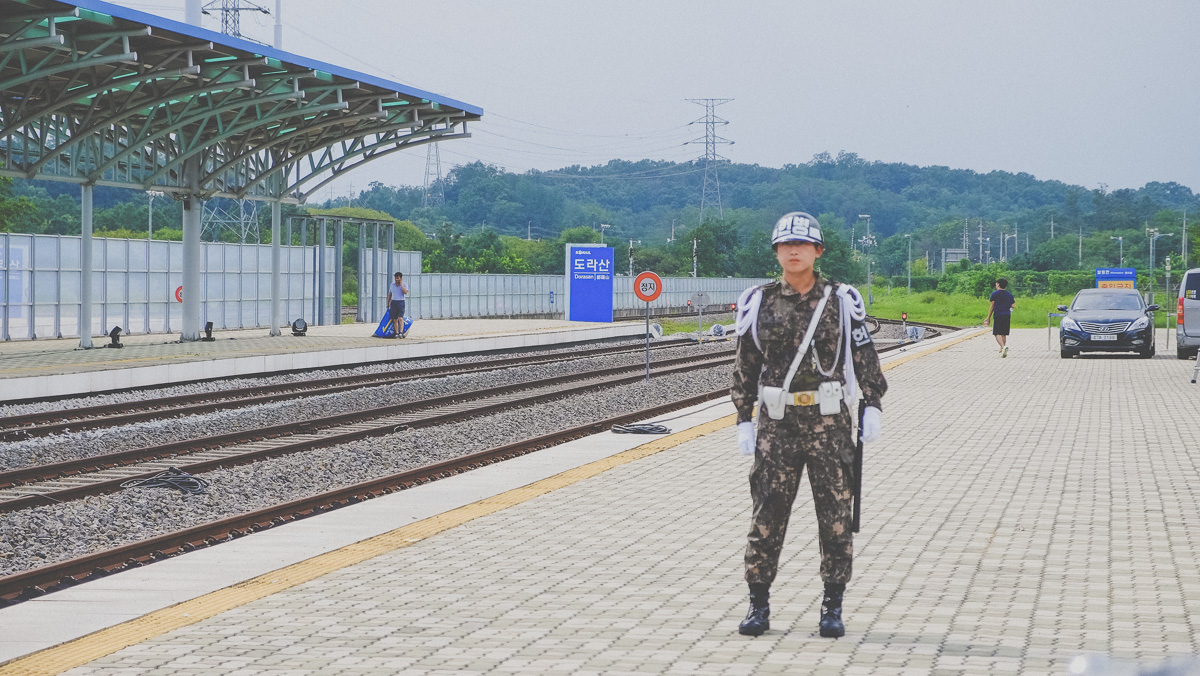
A South Korean Soldier positioned himself toward the north end of the platform—to deter anyone who had any ideas of making a run for the border.
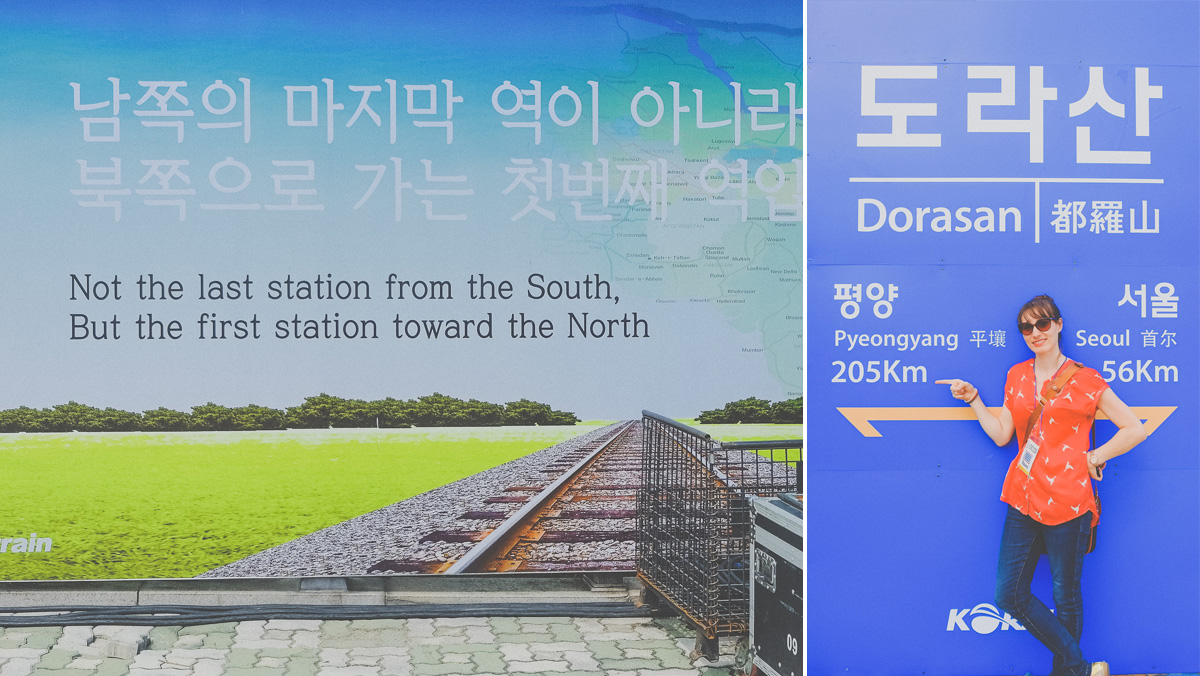
Both positive and hopeful signage on the platform which will hopefully one day again carry passengers to the North.
The station was our last stop before the Joint Security Area, where we would find ourselves literally in the middle of the tension.
Read Part 2 The JSA, The Space Between Political Charades and Tragedy
Read Part 3 Our Last Glimpses of North Korea and Further Reflections from the DMZ

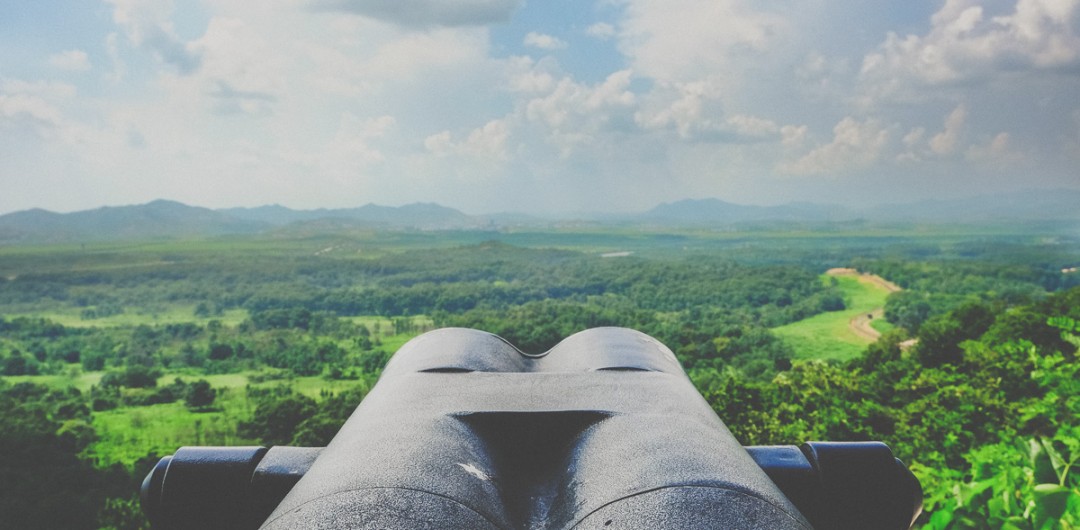
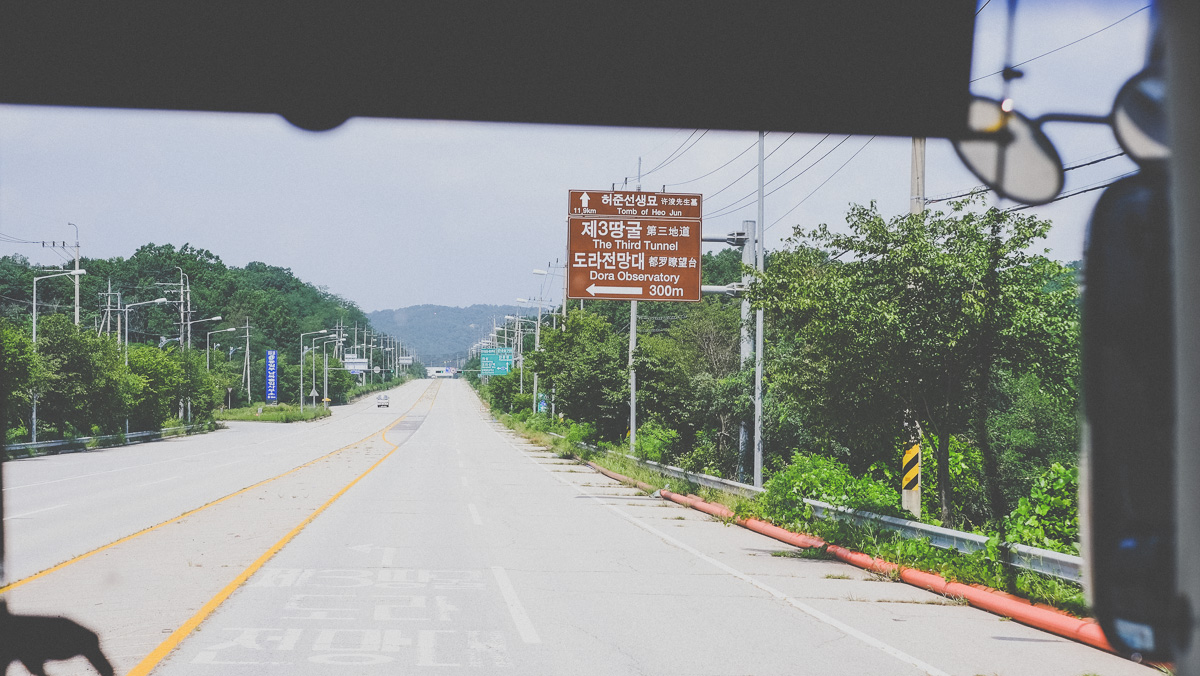
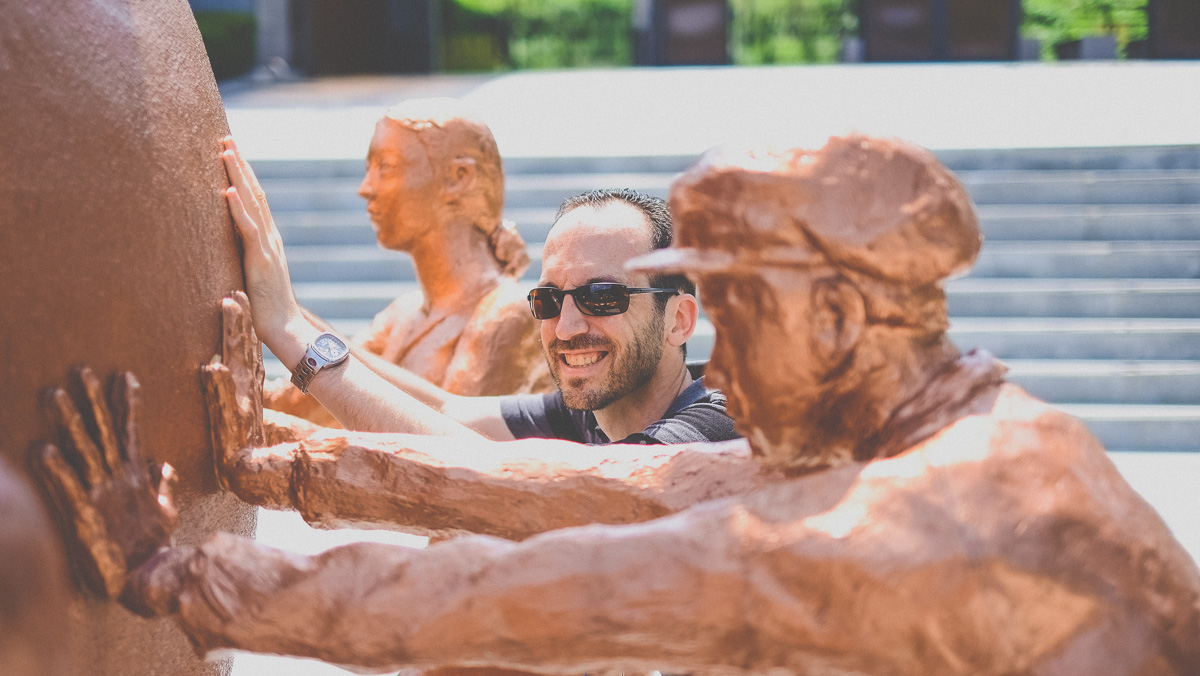
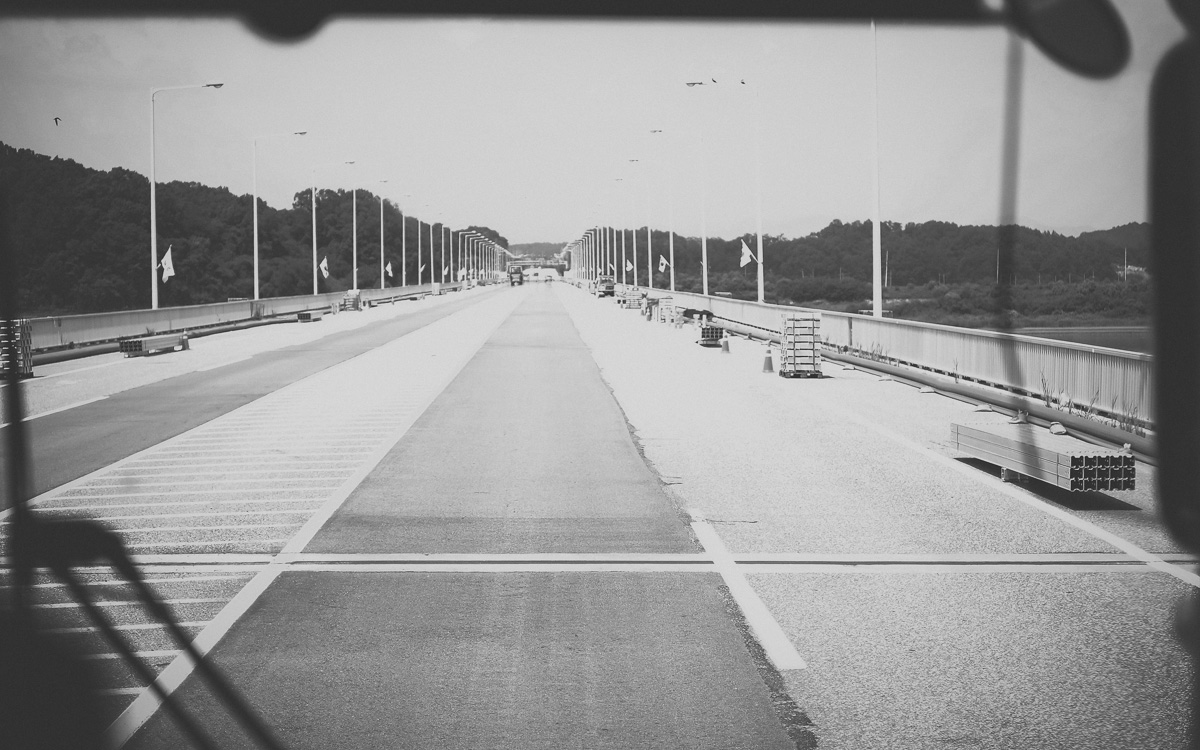
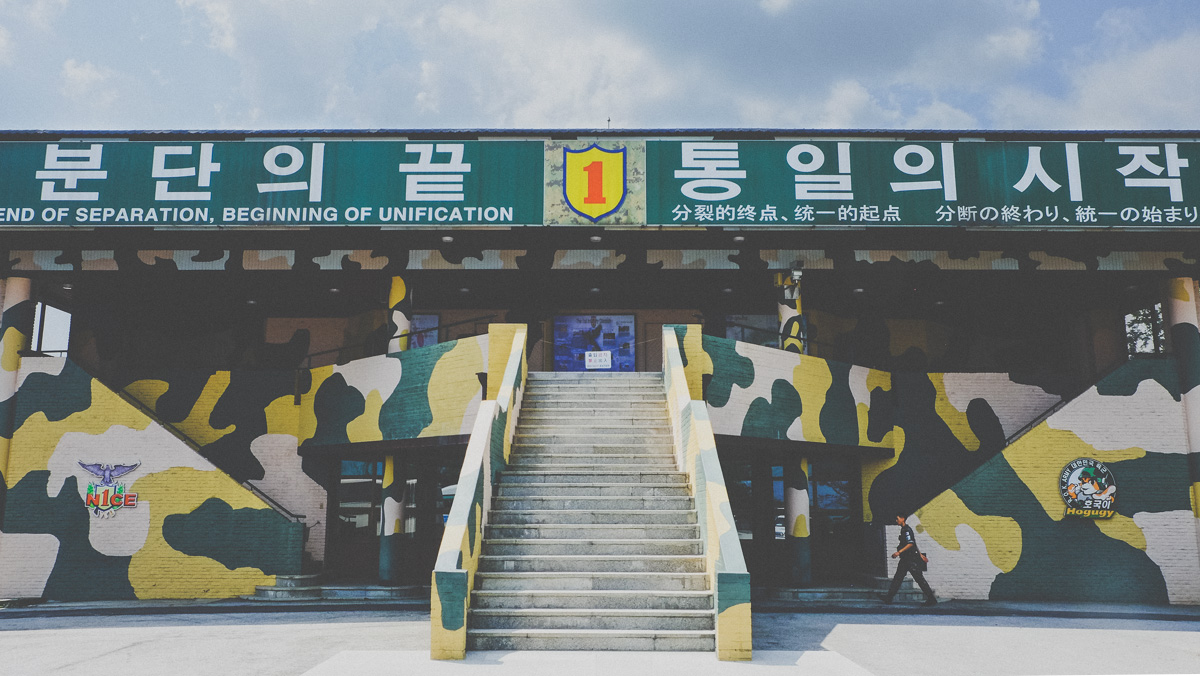

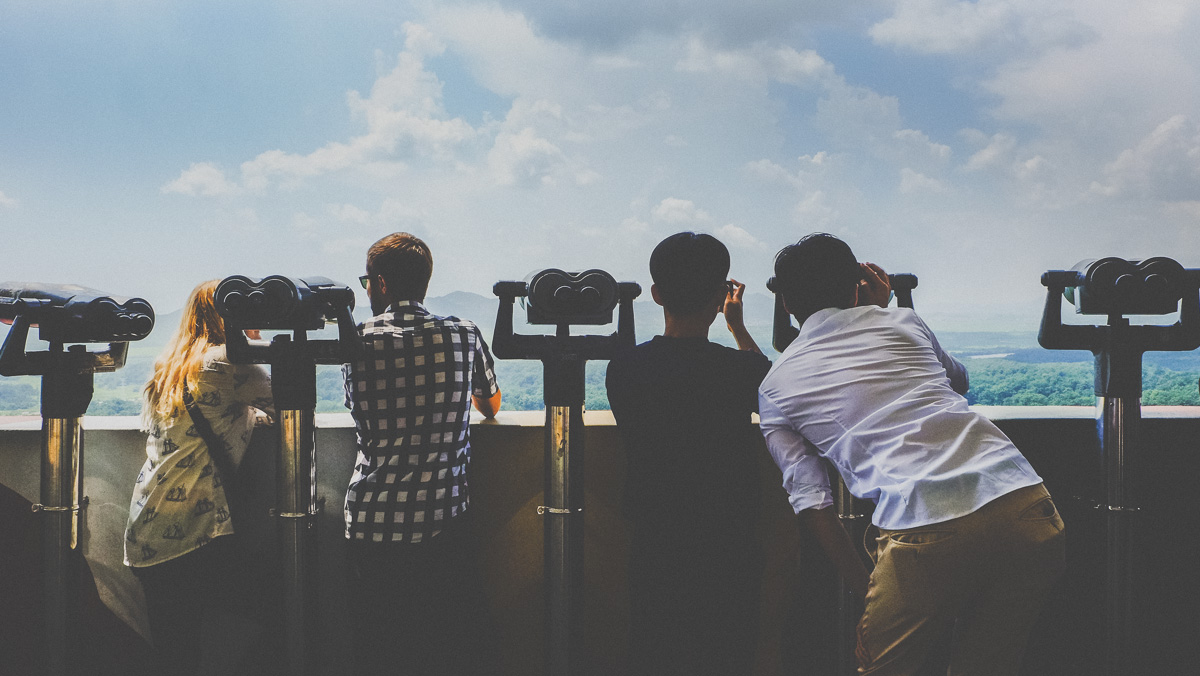
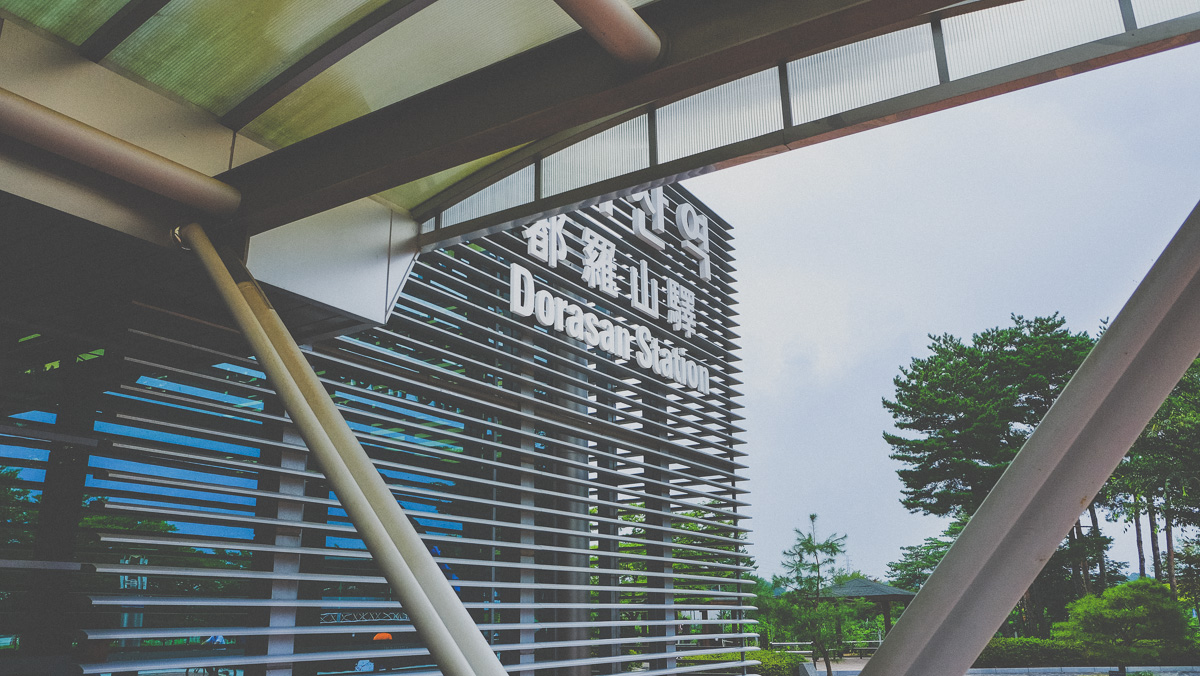
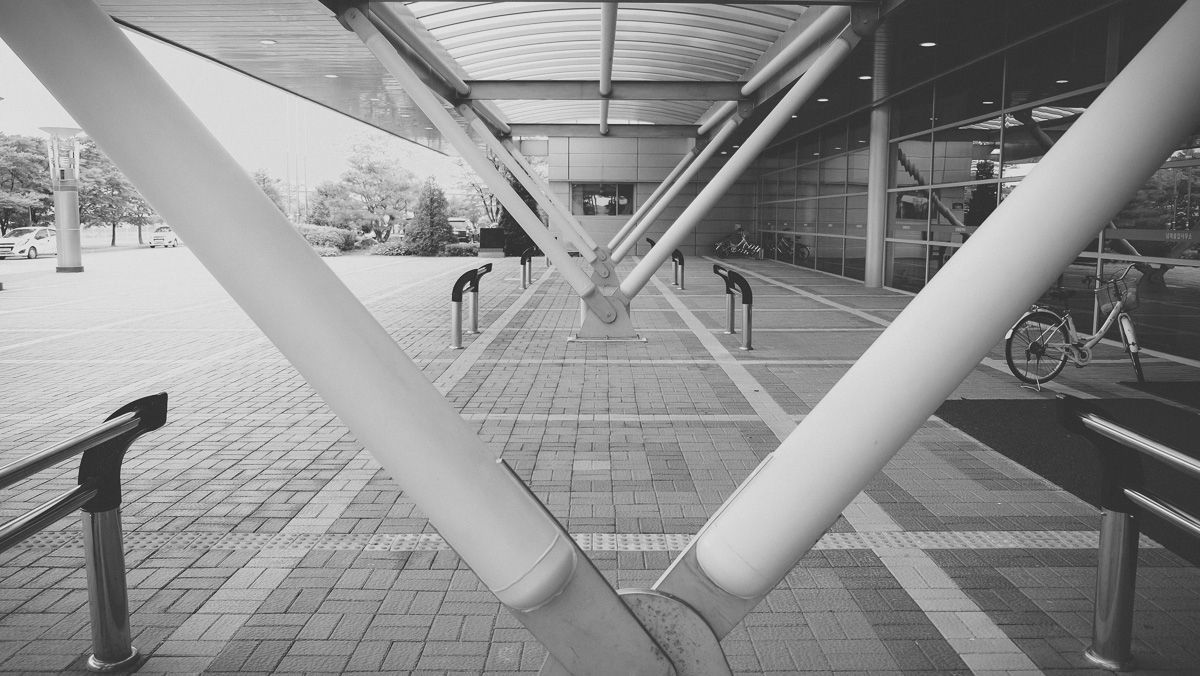
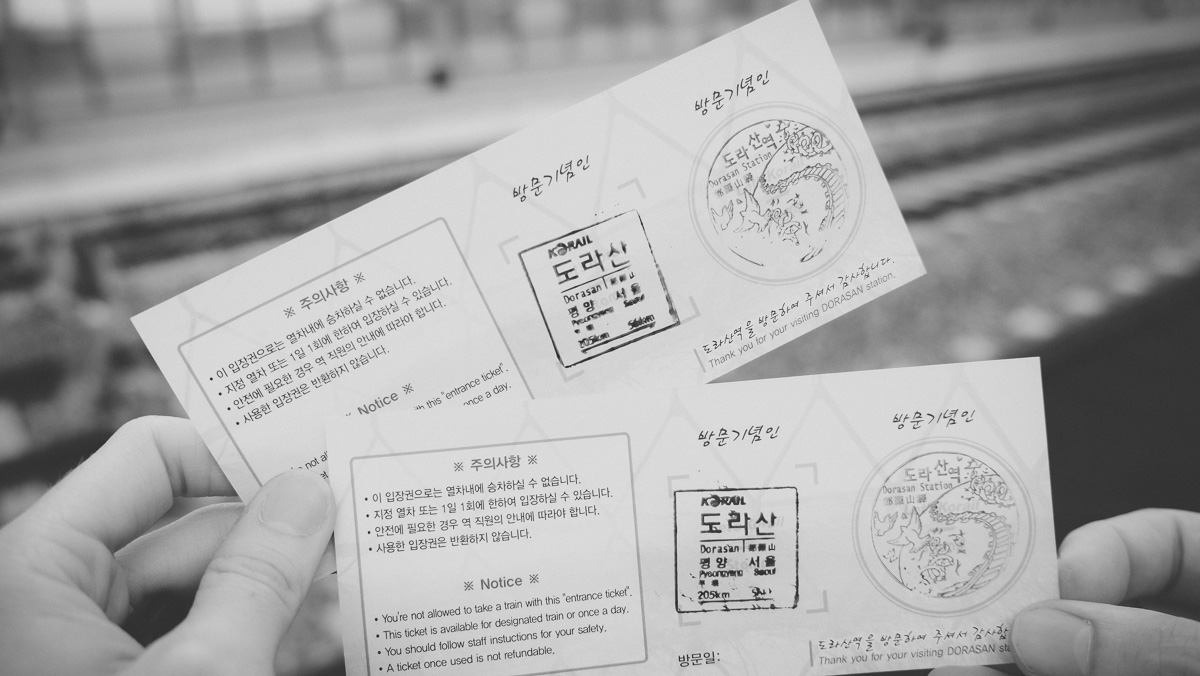
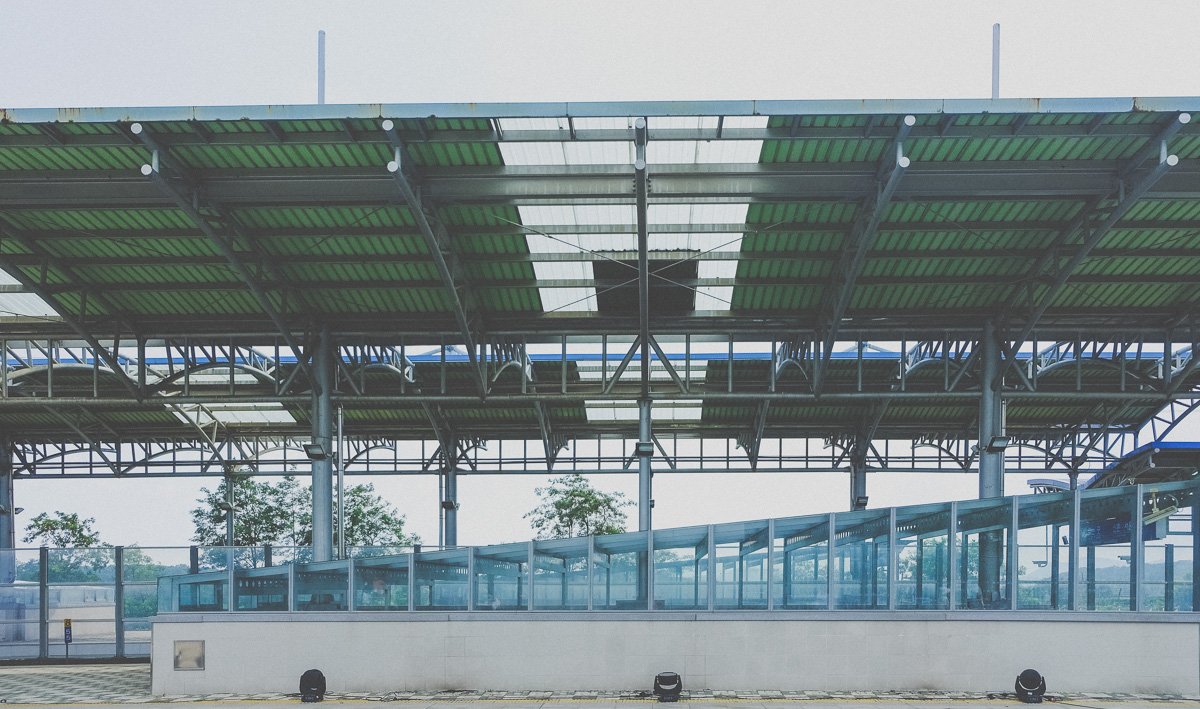
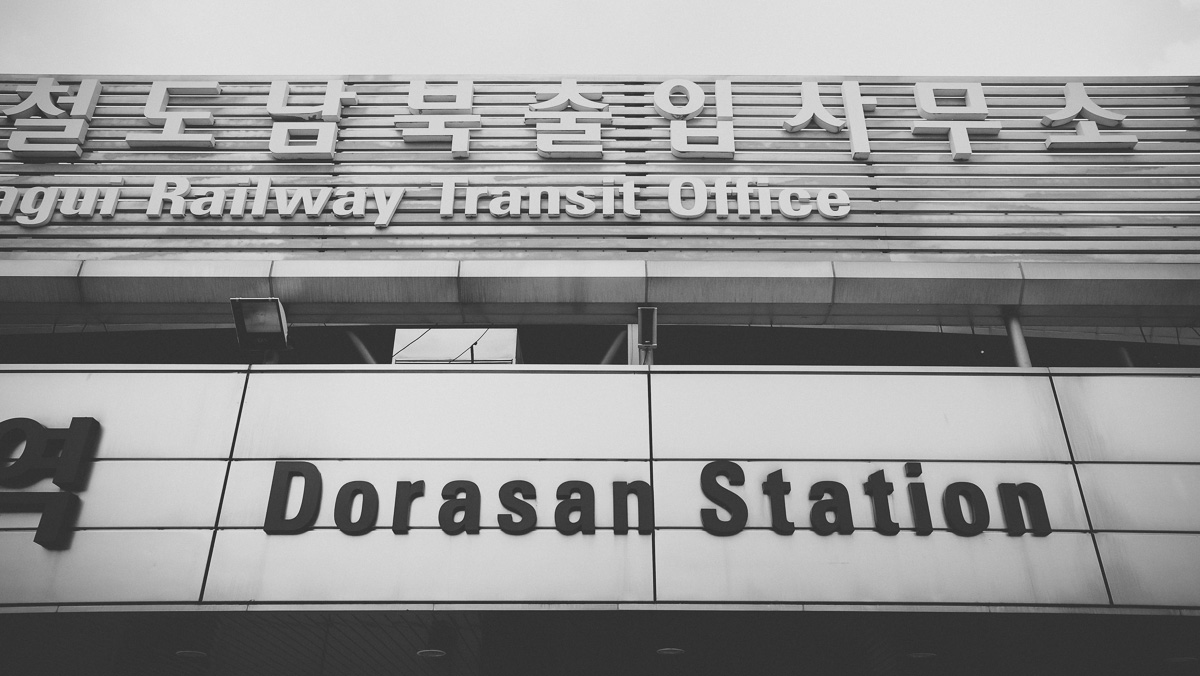

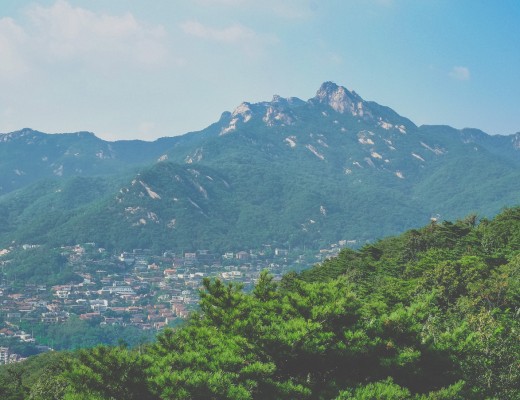
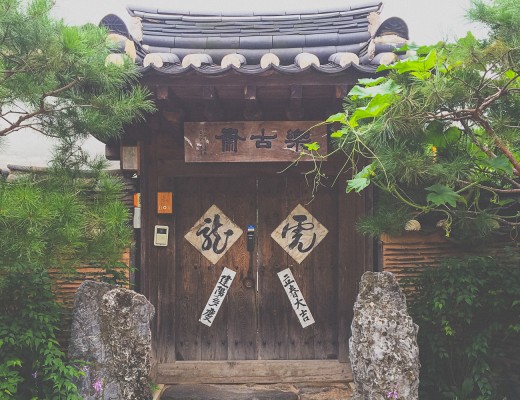
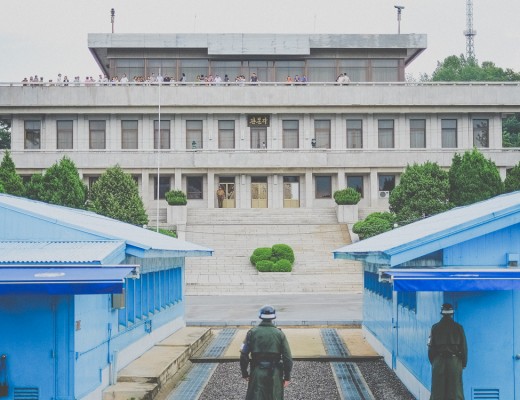
No Comments